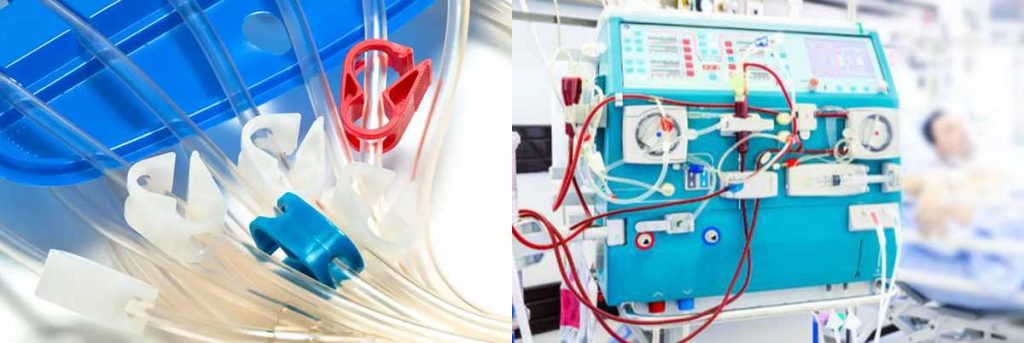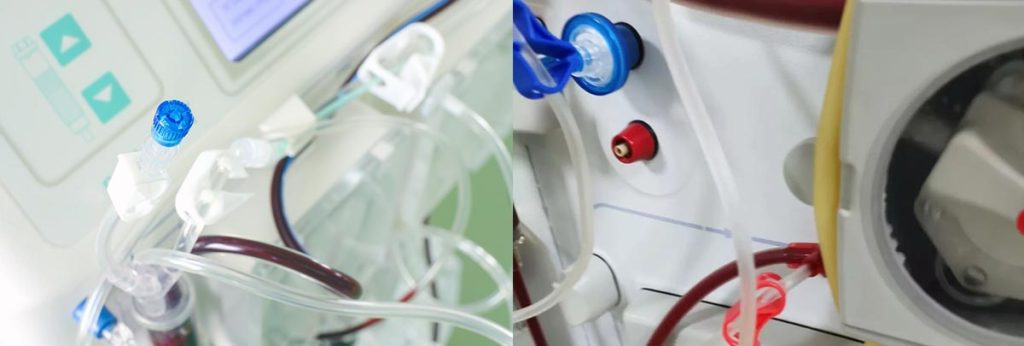

Cramps during dialysis, particularly in the legs, remain a frequent challenge for hemodialysis patients. Research highlights how dialysis time and frequency directly influence the occurrence of these cramps. For example, studies show that modifying magnesium levels in the dialysate significantly reduces muscle cramping experiences, with cramps decreasing from 77% to 56% in one group of dialysis patients. Addressing such issues not only improves physical comfort but also enhances overall quality of life. Personalized dialysis plans tailored to individual needs help mitigate leg cramping and related complications, ensuring better treatment outcomes.
Key Takeaways
- Longer dialysis sessions help prevent cramps by slowly removing fluids and balancing electrolytes.
- More frequent dialysis sessions lower cramp risks by managing fluids better.
- Custom dialysis plans made for each person improve results and comfort.
- Drinking enough water and keeping electrolytes balanced stop cramps during dialysis.
- Stretching and taking magnesium can help reduce muscle cramps.
Understanding Cramps During Dialysis
What Are Muscle Cramps?
Muscle cramps are sudden, involuntary contractions of one or more muscles. These contractions often cause significant discomfort and can last from a few seconds to several minutes. In hemodialysis patients, cramps frequently occur during treatment sessions, particularly in the legs. Neuromuscular fatigue and altered reflex control are common mechanisms behind these cramps. Dehydration and electrolyte imbalances, although widely discussed, lack definitive cause-and-effect evidence. Schwellnus et al. (2009) suggested that an imbalance in excitatory and inhibitory signals due to fatigue might trigger cramps. Stretching is often recommended as an effective way to relieve acute cramps.
Prevalence and Frequency of Muscle Cramps in Hemodialysis Patients
Cramps during dialysis are a common issue among hemodialysis patients. Studies indicate that rapid ultrafiltration and fluid shifts during treatment contribute significantly to the frequency of muscle cramps. Patients undergoing shorter, more frequent hemodialysis sessions report higher occurrences of cramps compared to those on longer, slower regimens. The Kidney Disease Outcomes Quality Initiative (KDOQI) guidelines emphasize the importance of maintaining balanced electrolyte levels to reduce the frequency of muscle cramps. Stretching exercises and pharmacological treatments, such as quinine, have also been shown to help manage these symptoms effectively.
Impact of Leg Cramping on Patient Well-Being
Leg cramping during dialysis can negatively affect a patient’s overall well-being. These cramps often lead to physical discomfort, reduced mobility, and inactivity. In some cases, they may contribute to poor nutritional status, further impacting health outcomes. Patient-reported outcome measures (PROMs) highlight the broader effects of intradialytic cramps on quality of life. Many patients report that cramps disrupt their daily activities and sleep patterns. For those undergoing in-center dialysis or home dialysis, addressing leg cramping is essential for improving treatment adherence and overall quality of life. Implementing an exercise program tailored to individual needs can also help alleviate these symptoms and enhance physical function.
Influence of Dialysis Time on Muscle Cramping Experiences
Effects of Longer Dialysis Sessions
Longer dialysis sessions often aim to remove excess fluid and toxins more gradually. This approach can reduce the risk of rapid fluid shifts, which are a common cause of leg cramping in hemodialysis patients. Studies suggest that extended sessions may help stabilize electrolyte levels, minimizing the occurrence of cramps during dialysis. However, prolonged treatment can sometimes lead to intradialytic hypotension, a condition linked to muscle cramping experiences. Patients undergoing in-center dialysis often report fewer severe cramps when sessions are extended, as the slower process allows the body to adjust more effectively.
A study by Arieff AI highlights the role of fluid and electrolyte shifts in dialysis-related cramps. It emphasizes that slower fluid removal during longer sessions can mitigate these shifts, reducing the frequency of muscle cramps. Similarly, Davenport et al. found that achieving blood pressure targets during extended dialysis improves overall control but may still pose a risk of hypotension-related cramps.
Effects of Shorter Dialysis Sessions
Shorter dialysis sessions are often preferred for their convenience, especially for those on home dialysis. However, these sessions may increase the frequency of muscle cramps due to rapid fluid removal. The accelerated process can lead to significant electrolyte imbalances, which contribute to the pathophysiology of leg cramping. Hemodialysis patients undergoing shorter sessions frequently report more severe cramps, particularly in the legs, as the body struggles to adapt to the quick changes.
Patients with carnitine deficiency may experience heightened muscle cramping experiences during shorter sessions. This deficiency, common among hemodialysis patients, exacerbates the severity of cramps by impairing muscle function. Implementing an exercise program tailored to individual needs can help alleviate these symptoms and improve overall management.
Research Insights on Dialysis Time and Cramps

Research consistently shows a strong correlation between dialysis time and the occurrence of cramps. Key findings include:
- A high prevalence of muscle cramps (75.75%) among hemodialysis patients, often linked to fluid removal during treatment.
- FATHIMA T’s research reported that 70.7% of patients experienced cramps, highlighting the widespread nature of this issue.
- Gradual fluid removal during longer sessions reduces the frequency of muscle cramps, while shorter sessions increase the risk.
The table below summarizes additional clinical evidence:
| Study Reference | Findings |
|---|---|
| Arieff AI. Dialysis disequilibrium syndrome: current concepts on pathogenesis and prevention. Kidney Int. 1994;45(3):629–35. | Rapid fluid and electrolyte shifts during dialysis may contribute to muscle cramps. |
| Davenport A, Cox C, Thuraisingham R. Achieving blood pressure targets during dialysis improves control but increases intradialytic hypotension. Kidney Int. 2008;73(6):759–64. | Hypotension during dialysis is linked to muscle cramps. |
| Garg AX et al. Frequent Hemodialysis Network Trial Investigators. Patients receiving frequent hemodialysis have better health-related quality of life compared to patients receiving conventional hemodialysis. Kidney Int. 2017;91(3):746–54. | Frequent dialysis sessions may reduce muscle cramps. |
These insights underscore the importance of tailoring dialysis time to individual patient needs. Adjusting session length can significantly impact the frequency and severity of cramps, improving overall treatment outcomes.
Influence of Dialysis Frequency on the Frequency of Muscle Cramps
Increased Dialysis Frequency and Its Impact
Increasing dialysis frequency can significantly affect the frequency of muscle cramps. Hemodialysis patients who undergo more frequent sessions often experience fewer cramps during dialysis. This approach allows for more gradual fluid removal, reducing the likelihood of rapid fluid shifts that contribute to leg cramping. Frequent sessions also help maintain stable electrolyte levels, which play a critical role in preventing cramps. For patients on home dialysis, increased frequency offers flexibility and better control over treatment, leading to improved outcomes. However, frequent sessions may not completely eliminate cramps, especially in individuals with carnitine deficiency, which impairs muscle function.
Reduced Dialysis Frequency and Its Impact
Reduced dialysis frequency often leads to an increased frequency of muscle cramps. Longer intervals between sessions result in greater fluid and toxin accumulation, which can exacerbate the pathophysiology of leg cramping. Hemodialysis patients who receive treatment less frequently may experience more severe cramps due to the body’s inability to adapt to sudden fluid and electrolyte changes during sessions. This issue is particularly evident in patients with carnitine deficiency, as their muscles are more prone to cramping. For those on home dialysis, reducing session frequency may seem convenient but can negatively impact overall management of leg cramping.
Evidence from Studies on Dialysis Frequency and Leg Cramping
Research highlights the relationship between dialysis frequency and leg cramping. Studies show that frequent hemodialysis sessions reduce the frequency of muscle cramps by promoting gradual fluid removal and stabilizing electrolyte levels. For example, the Frequent Hemodialysis Network Trial found that patients receiving more frequent sessions reported fewer cramps and better quality of life. Conversely, reduced frequency often correlates with increased cramps, particularly in individuals with carnitine deficiency. Implementing an exercise program tailored to individual needs has been shown to alleviate cramps and improve muscle function, further supporting the importance of personalized treatment plans.
Mechanisms Behind Cramps During Dialysis
Fluid Shifts and Ultrafiltration
Fluid shifts during dialysis play a significant role in causing leg cramping. Rapid ultrafiltration, a process used to remove excess fluid from the body, often leads to sudden changes in vascular tone. These shifts can disrupt blood flow to the muscles, triggering cramps. Hemodialysis patients frequently experience this issue, especially during shorter sessions where fluid removal occurs more quickly. Adjusting ultrafiltration rates can help manage these symptoms by allowing the body to adapt more gradually.
Electrolyte disturbances caused by fluid shifts also contribute to muscle cramping experiences. Sodium profiling during dialysis has been shown to reduce cramps by ensuring gradual changes in serum sodium levels. Magnesium supplementation is another effective strategy, as low magnesium levels are linked to severe cramps. Dialysis patients undergoing in-center dialysis or home dialysis can benefit from these adjustments, which aim to minimize the impact of fluid shifts on muscle function.
Electrolyte Imbalances and Their Role
Electrolyte imbalances, particularly in sodium, calcium, and magnesium, are common among hemodialysis patients and significantly influence leg cramping. Hypomagnesemia and hyponatremia are frequently observed during hemodialysis and are known to exacerbate cramps. These imbalances disrupt the normal functioning of muscle cells, leading to involuntary contractions. Maintaining balanced electrolyte levels, as recommended by KDOQI guidelines, is essential for preventing cramps during dialysis.
In addition to magnesium and sodium, calcium imbalances also play a role. Alkalosis, a condition that can occur during dialysis, leads to hypocalcemia. This triggers the release of calcium ions from the sarcoplasmic reticulum, causing muscle contractions. Addressing these imbalances through dietary adjustments and supplementation can reduce the frequency of leg cramping and improve patient perspectives on treatment outcomes.
Other Physiological Factors Contributing to Muscle Cramping Experiences

Several physiological factors beyond fluid shifts and electrolyte imbalances contribute to muscle cramping experiences during dialysis. Carnitine deficiency is a notable example. This condition, common in chronic renal failure patients, impairs muscle function by depleting ATP levels. Hemodialysis patients with carnitine deficiency often report more severe cramps, particularly during shorter hemodialysis sessions. Supplementing carnitine can alleviate these symptoms and enhance muscle performance.
Activation of the sympathetic nervous system also plays a role. This activation can lead to muscle capillary derecruitment, reducing blood flow to the muscles and increasing the likelihood of cramps. Additionally, inadequate angiotensin II response during fluid removal has been hypothesized to decrease muscle blood flow, further contributing to leg cramping. Implementing an exercise program tailored to individual needs can help improve circulation and reduce the occurrence of cramps, benefiting both in-center dialysis and home dialysis patients.
Conclusion
Dialysis time and frequency significantly influence the occurrence of cramps during dialysis. Longer sessions and increased frequency often reduce cramping by stabilizing fluid and electrolyte levels, while shorter or less frequent sessions may exacerbate these symptoms. Addressing individual patient needs remains essential for minimizing discomfort and improving treatment outcomes.
Collaboration between patients and healthcare providers plays a vital role in managing leg cramping. Incorporating patient-reported outcome measures (PROMs) ensures that treatment plans align with patient experiences and preferences. Longer treatment times and lower ultrafiltration rates, particularly in home dialysis, can further enhance patient comfort and quality of life.
- Key insights include:
- PROMs capture patient experiences, fostering better treatment adoption.
- Home dialysis offers flexibility, reducing cramping severity.
- Personalized plans improve adherence and overall well-being.
